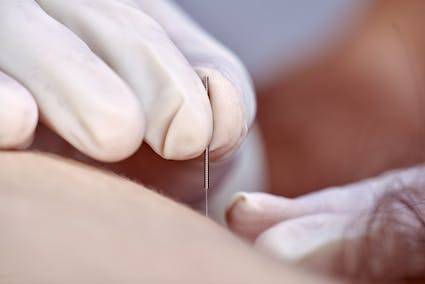How Effective is Dry Needling?
Dry needling is an effective technique for relieving pain, deactivating trigger points and improving function. Physical therapists often incorporate it into a treatment plan that also includes massage or exercise therapy as additional interventions. If you’re looking for the best physical therapy, visit Simply Physio today.
Dry needling is an effective treatment for many musculoskeletal conditions, such as back pain relief and sciatica pain relief, shoulder pain, and muscle tightness. While some patients report relief after just one treatment, others may require multiple sessions in order to see results.
How It Works
If you’re experiencing chronic discomfort, your physical therapist may suggest dry needling as a possible treatment. This minimally invasive technique has been demonstrated to be successful for numerous conditions and injuries. To learn more about dry needling and other services, visit our dry needling page.
A sterile needle is inserted into the skin and driven into a knotted area of muscle tissue known as a trigger point. When it strikes the muscle, it causes a local twitch response (LTR), which releases the knotted tissue and eases pain.
Many patients report feeling better after just one session, while for others it takes multiple treatments to achieve significant reduction in pain and muscle stiffness. It is also important to note that some bruising may occur from the dry needling process; however, this should go away quickly.
Dry needling not only relieves pain and restores mobility, but it can also provide other advantages like increased energy levels, improved appetite, and better sleep quality. Furthermore, it’s an efficient way to extend your treatment plan and speed up recovery from various conditions or injuries.
Trigger Points
Trigger points are knots in muscle fibers that can cause discomfort, spasm, and reduced movement. They often develop from overtraining or injury but may also result from prolonged sitting or bed rest.
When trigger points become irritated, they can affect the nerves controlling muscle contraction and cause referred pain – when muscles and surrounding tissue become sore from an aggravated nerve.
Studies have demonstrated that dry needling can reduce the amount of pain a trigger point causes and improve referred pain. It also reduces peripheral nociception from the trigger point as well as slow down activity in dorsal horn neurons and brainstem areas.
Pain Relief
Dry needling is an effective remedy for relieving pain from trigger points, knotted muscles that are tender when touched. These trigger points may refer the discomfort elsewhere on the body, creating chronic symptoms.
Dry needling is a technique in which your physical therapist locates the trigger point and inserts an ultra-thin needle through your skin into it. After inserting the needle, they use light touch to attempt to induce what is known as a local twitch response in the muscle.
Your therapist should observe a twitch reaction as an encouraging sign that the muscle is responding to treatment. They can then use gentle needle movement to try to release any trigger points in the affected areas.
Dry needling can also increase blood flow to an area, bringing fresh oxygen and nutrients for healing. Furthermore, this increased circulation helps flush away acidic chemicals that have built up in muscles over time.
Long-Term Effects
Dry needling is an effective treatment for many conditions, including pain and stiffness. Not only that, but it may help expedite recovery time and enhance quality of life as well.
Treatment involves inserting needles through the skin into a trigger point or knotted muscle tissue. These micro-tears trigger your body’s natural defenses to go into overdrive, bringing in nutrient-rich blood to the area and speeding up tissue repair.
It is vital to get this right, as damaged or irritated tissue can impede blood flow and make your condition worse rather than better. Limiting oxygen and nutrients reaching muscles leads to pain and discomfort in the short term.
Although the long-term effects of dry needling are still uncertain, there is some moderate-quality evidence that it reduces pain over time (SMD = -0.26; 95% CI: -0.58, 0.06) at two time points analyzed by Sterling et al38.
If you’re interested in trying dry needling or other physical therapy treatments, contact the team at Simply Physio to schedule an appointment today.



